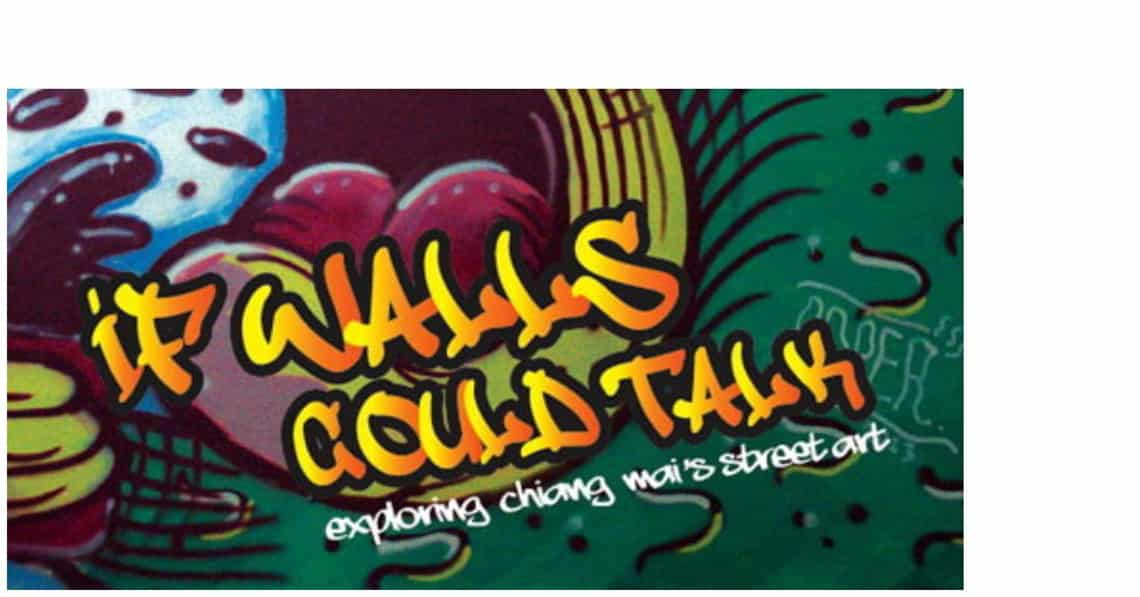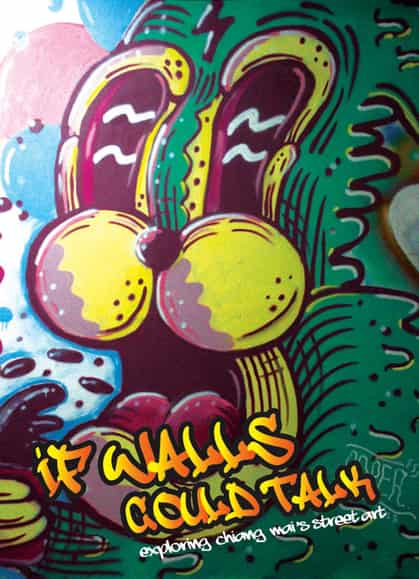
Chiang Mai is awash with art, but many people probably don’t notice the growing number of tagged walls, painted concrete, graffiti style advertising, anonymous stickers, spray painted stencils and mysterious signals dotted around town. Unlike in some parts of the world, street art hasn’t been as prolific here, and has therefore stayed for the most part under the public radar. While you may occasionally glance, peripherally as you whiz past on your motorbike, a few dilapidated walls, some abandoned buildings or a construction site or two marked by artistic expression, they probably don’t cause much more than a “huh” or a second glance. Yes, life is hectic, and often the little things go unnoticed, but take a moment and pay attention! There is a whole creative universe alive in our city streets.
A fringe culture that stakes claim on public spaces and continues to evolve by generating innovative new forms, graffiti is a movement which has evolved so much in terms of expression and style that it is now generally termed “street art”.
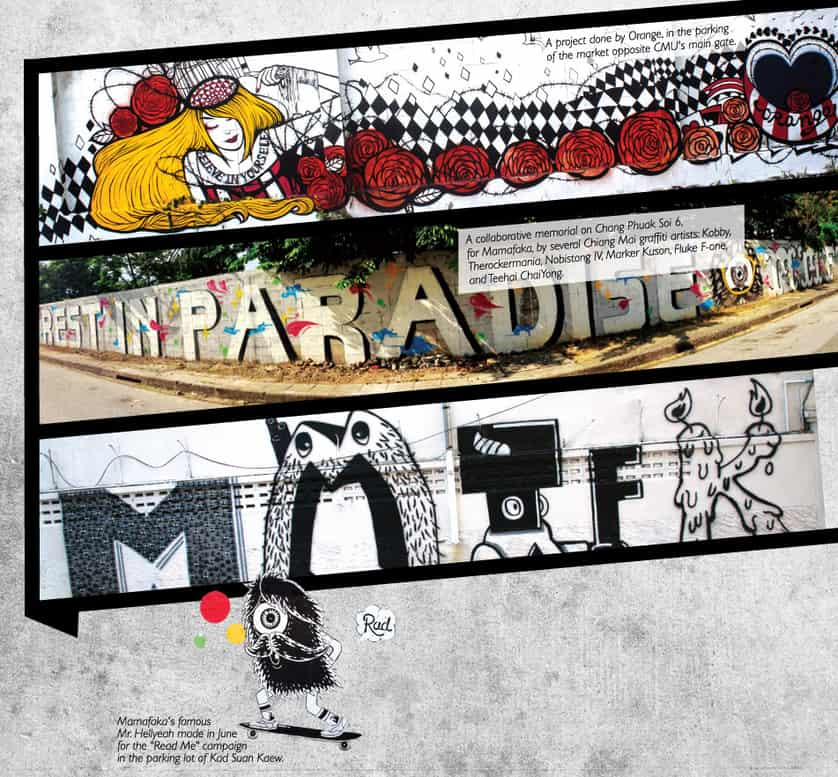
In Thailand, this movement likely emerged about a decade ago, led by artists and writers such as Kobby, Yuree Kensaku, Floyd Floyds, and Mamafaka, whose moustachioed hairy monster character, Mr. Hellyeah, brought him acclaim throughout the wider world of art and design. Tragically, Mamafaka drowned in Phuket this past September, shocking not only his fellow street artists but the graphic design communities in Thailand as well. This inspired the artists to create stunning memorials for him which can be seen in Chiang Mai today.
The local street art community is both tight-knit and welcoming, unafraid to break with tradition and traverse cultural boundaries. One Chiang Mai based street artist, Orange, is a 28-year-old female. New to the street art circle, she has managed to pave her way in this male-dominated universe. “There are three girls in Chiang Mai who graffiti and more than 20 guys,” she tells me. “But negative comments about women doing street art are mainly from outsider men who remain in the Palaeolithic age and who still think that a woman is only good to stay at home to care for children.”
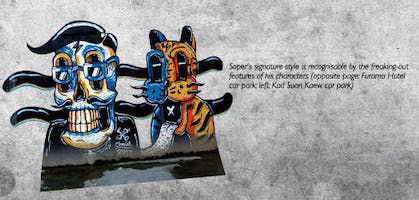
Orange is a lone wolf in the Chiang Mai graffiti world. She does not belong to a crew and she has no desire to join one: “I’m addicted to my freedom and the idea of belonging to a crew and being held accountable… no thanks! I want to continue to express myself as I see fit.”
Soper, although new to the Chiang Mai street art scene as well, has already developed a well-determined style. “I get inspired by a lot of European graffiti artists, but especially by the work of Nychos, through his project Rabbit Eye Movement, “[a street art concept that has developed into an artspace in Vienna],” he says.
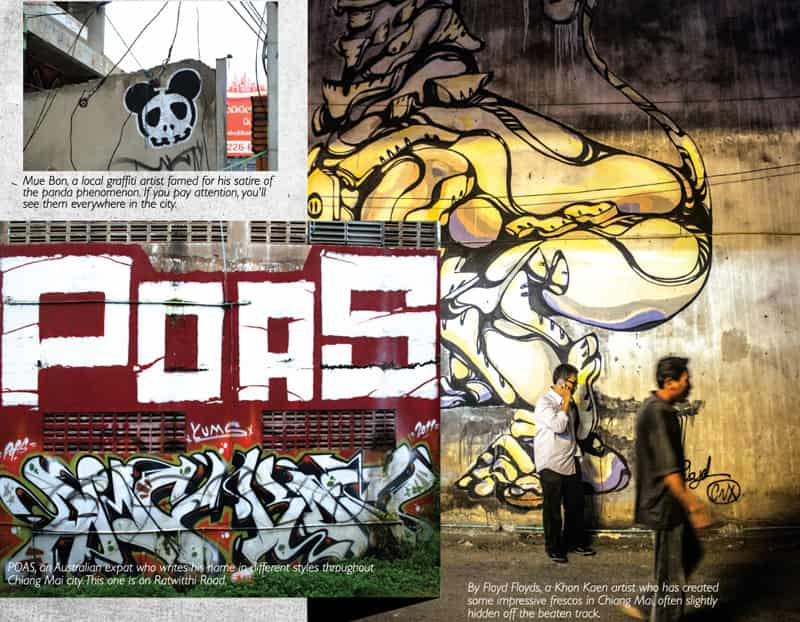
Last June, Soper participated in a campaign across Thailand called “Read Me”. Led by a group of street artists to collect books and educate young people about the importance of education and knowledge, the campaign was based on the idea that children are more easily captivated by images, so street art can be an effective means of connecting to Thai youth. The books were collected and art was displayed in the parking lot of Kad Suan Kaew mall, in an effort to reach out to the city’s youth while also giving artists another platform to show their work to the public.
Soper had his first solo exhibition last month at the Lazy Sunday Party Gallery off Sirimangkalajarn. His latest street project is a collaboration with other graffiti artists in the parking lot of the Furama Hotel.
What drives these artists to express themselves on the street? The answer is not black and white. What is simple vandalism for some is real modern art for others. But of this we can be sure: street art is freedom from convention. It offers the possibility to int eract with the environment, the potential to get a public reaction, the expression of an imaginative moment, a subliminal message stamped on our minds. And if nothing else, it is a small scrap of beauty in an unexpected place, and certainly more interesting to look at then a plain old wall.
For more on Chiang Mai’s street art scene: www.facebook.com/chiangmai.graffiti.5
